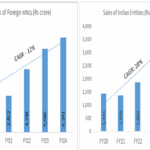“With studies suggesting India to home 31.6 million blind people by the year 2020, experts stress upon raising awareness around prevention and treatment of blindness”
New Delhi, October 10, 2018:
On World Sight Day 2018, Experts, revealed that while India has the maximum number of blind people in the world, most do not know that in more than 80% of the cases, the condition is very much preventable.
Dr Ikeda Lal, Cornea and Refractory Surgery Specialist, at Delhi Eye Centre and Sir Ganga Ram Hospital New Delhi stressed on the importance of spreading awareness, like around 80-90% of the blindness is preventable if only people know how to address them. “The common reasons of blindness in India include cataract, glaucoma, macular degeneration, uncorrected refractive error, diabetic retinopathy and corneal blindness. Unfortunately, people often do not know that all these conditions can be treated and the blindness can be reversed. Occasions like World Sight Day bring an excellent opportunity to initiate public awareness and bring this pressing issue to the fore,”
Dr. Rajesh Sinha, Professor, Dept. of Opthalmology, AIIMS says “Nearly 80% of blindness in the world is avoidable, i.e. it can either be preventable or treatable. Let’s increase the public awareness in this direction so that a majority of people in the society who may become blind due to ignorance maintain their sight for life. Ocular causes of preventable blindness can be trachoma, vitamin A deficiency while causes of treatable blindness can be cataract , uncorrected refractive error, diabetic retinopathy”
Dr. Ikeda says “Since 1976, when India became the first country in the world to launch the National Program for Control of Blindness, blindness eradication has been an integral part of the national healthcare policies. However, considering the increasing life expectancy and rising burden of the blindness, probably we need to intensify the awareness drives and be more clear and direct in our communications regarding measures to prevent blindness.”
Dr. Ikeda discussed most common reasons of the blindness in detail and a general obliviousness around them. She says, “Most people still do not know that cataract, most significant cause of the blindness in the country, can be treated at any stage. Still, many people wait for their cataract to ‘ripen’ before undergoing surgery, thereby worsening the condition, and even in some cases, leading to blindness.”
Reportedly, cataract, caused due to clouding of the eye lenses in old age, leading to blurry vision and ultimately blindness is responsible for 50-80% of the blindness in the country2.
Similarly, glaucoma, caused due to damage to the optic nerve usually because of high intra-ocular pressure, could be treated with medication, laser treatment, or surgery, provided it is reported timely. However, with 12 million people in the country affected by glaucoma and 1.2 million blind due to it3, seemingly awareness around its prevention and treatment is low. In fact, data suggest that more than 90 per cent of cases of glaucoma remain undiagnosed in the community3.
Another very important reason for blindness in India is diabetic retinopathy, especially considering the high prevalence of diabetes in the country. “People should know that over a period of time, two-thirds of all Type 2 and almost all Type 1 diabetics are expected to develop diabetic retinopathy but a regular screening and proper treatment could prevent this,” says Dr Ikeda .
In fact, corneal blindness, affecting approximately 6.8 million people in the country4, could also be treated by corneal transplant. Again, for this, we need to raise more awareness around the importance of eye donation.
“Giving the fact that most blindness is either preventable or treatable, it is high time when policymakers and stakeholders not just align their efforts towards strengthening the awareness drives but look for more sustained solutions,” adds Dr Ikeda.







